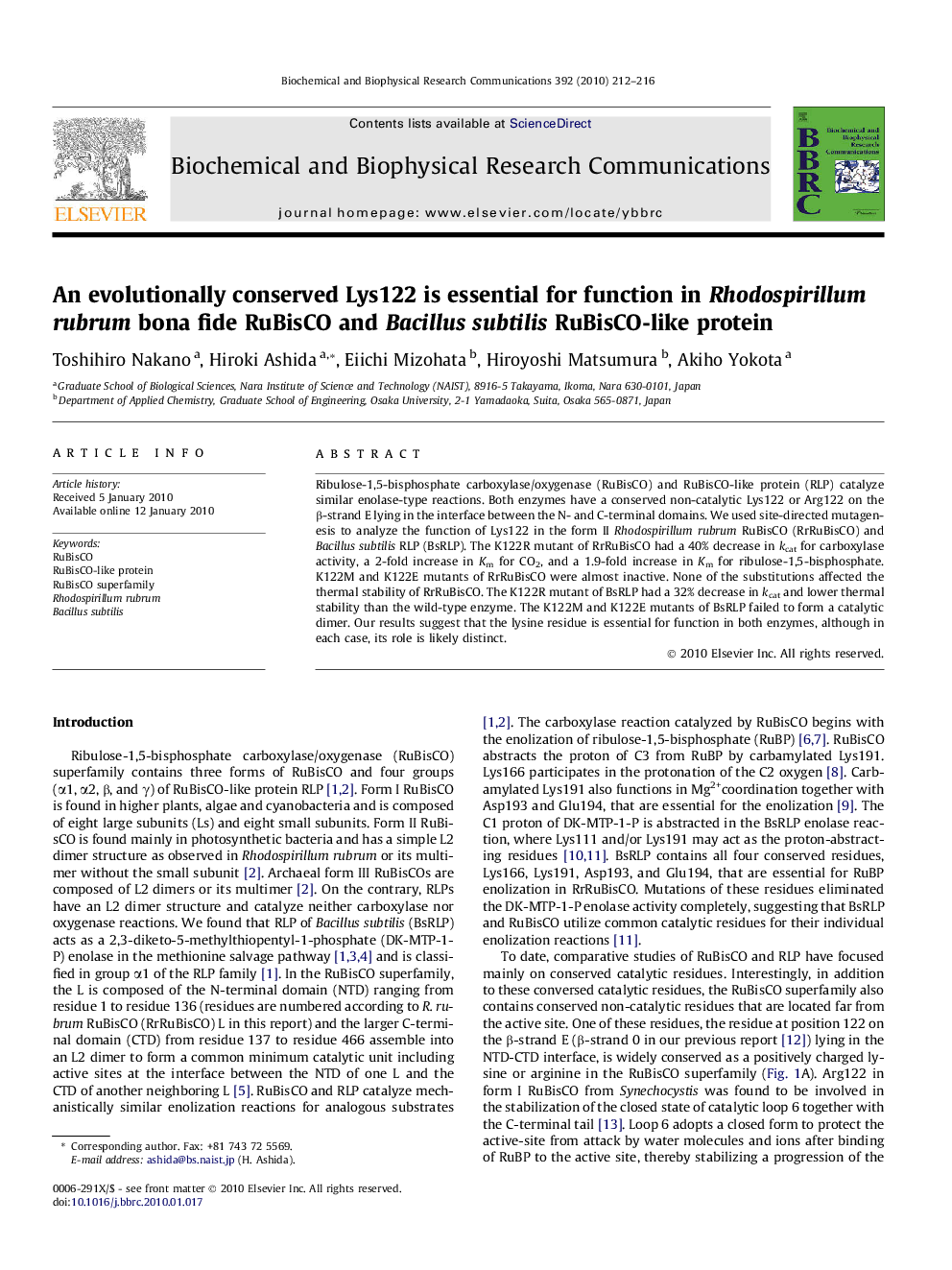| Article ID | Journal | Published Year | Pages | File Type |
|---|---|---|---|---|
| 1932690 | Biochemical and Biophysical Research Communications | 2010 | 5 Pages |
Ribulose-1,5-bisphosphate carboxylase/oxygenase (RuBisCO) and RuBisCO-like protein (RLP) catalyze similar enolase-type reactions. Both enzymes have a conserved non-catalytic Lys122 or Arg122 on the β-strand E lying in the interface between the N- and C-terminal domains. We used site-directed mutagenesis to analyze the function of Lys122 in the form II Rhodospirillum rubrum RuBisCO (RrRuBisCO) and Bacillus subtilis RLP (BsRLP). The K122R mutant of RrRuBisCO had a 40% decrease in kcat for carboxylase activity, a 2-fold increase in Km for CO2, and a 1.9-fold increase in Km for ribulose-1,5-bisphosphate. K122M and K122E mutants of RrRuBisCO were almost inactive. None of the substitutions affected the thermal stability of RrRuBisCO. The K122R mutant of BsRLP had a 32% decrease in kcat and lower thermal stability than the wild-type enzyme. The K122M and K122E mutants of BsRLP failed to form a catalytic dimer. Our results suggest that the lysine residue is essential for function in both enzymes, although in each case, its role is likely distinct.
